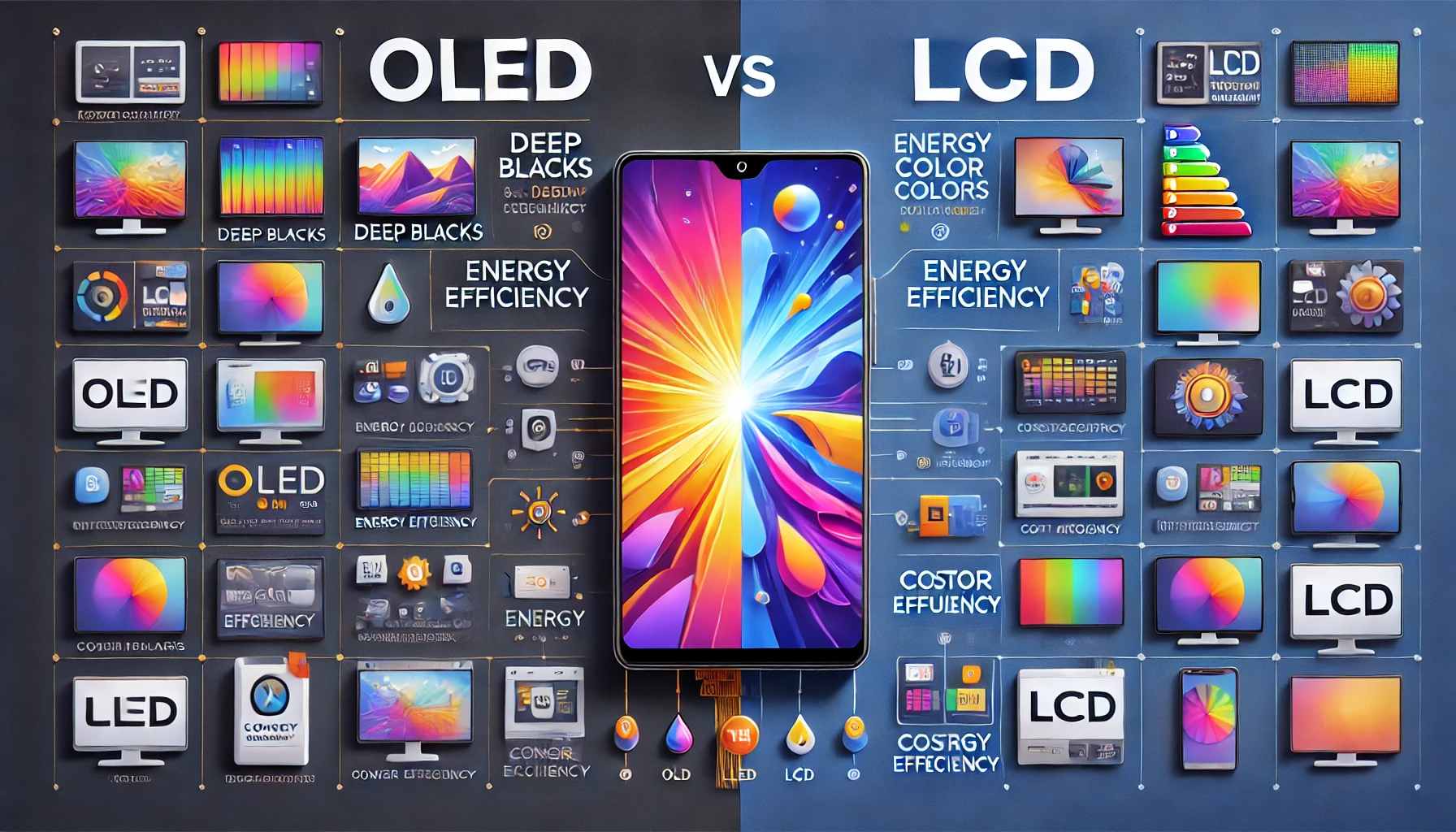In the ever-evolving world of mobile technology, one of the most hotly debated topics among enthusiasts and tech experts alike is the choice between OLED and LCD displays. Understanding the differences between these two technologies is crucial when choosing a new mobile device, as the display significantly affects the user experience. In this article, we will dive deep into the specifics of OLED and LCD technologies, compare their strengths and weaknesses, and help you make an informed decision about which display technology is better for your needs.
Understanding OLED Technology
OLED stands for Organic Light Emitting Diode. Unlike traditional displays, OLEDs do not require a backlight. Each pixel in an OLED display emits its own light, allowing for incredibly deep blacks and vibrant colors. This self-emissive property is what makes OLED displays stand out in terms of contrast and color accuracy.
Advantages of OLED Displays
- Deep Blacks and Infinite Contrast: Since OLED pixels can be turned off completely, they produce true blacks and, as a result, offer infinite contrast ratios.
- Vibrant Colors: OLED displays are known for their rich and vibrant color reproduction, making images and videos look more lifelike.
- Thinner and Flexible: OLED panels are thinner than their LCD counterparts and can be made flexible, which is why they are used in some of the latest foldable smartphones.
- Energy Efficiency: When displaying darker images or themes, OLED screens consume less power because fewer pixels are lit.
Disadvantages of OLED Displays
- Burn-In Risk: Prolonged display of static images can lead to burn-in, where certain parts of the screen show ghost images.
- Shorter Lifespan: The organic materials in OLED displays degrade faster than the materials in LCD screens, potentially leading to color shifts over time.
- Higher Cost: OLED technology is generally more expensive to produce, which can drive up the cost of devices using these displays.
Understanding LCD Technology
LCD stands for Liquid Crystal Display. LCD screens require a backlight to illuminate the pixels, which use liquid crystals to modulate light. This indirect method of producing light and color has its own set of advantages and disadvantages.
Advantages of LCD Displays
- Longer Lifespan: LCD displays tend to have a longer lifespan as they do not suffer from burn-in issues.
- Brightness: LCD screens can be extremely bright, making them suitable for use in well-lit environments.
- Lower Cost: Generally, LCD technology is less expensive to manufacture, making devices with LCD screens more affordable.
- No Burn-In Issues: Unlike OLED, LCD screens do not suffer from burn-in, making them more suitable for displaying static images for long periods.
Disadvantages of LCD Displays
- Thicker Panels: LCD screens are typically thicker than OLED displays due to the need for a backlight.
- Inferior Contrast and Blacks: LCDs cannot produce true blacks as effectively as OLEDs because the backlight is always on.
- Color Accuracy: While LCD technology has improved, it still lags behind OLED in terms of color accuracy and vibrancy.
Comparing OLED and LCD Displays
Now that we have a clear understanding of what OLED and LCD technologies entail, let’s compare them across several key aspects:
Brightness and Outdoor Visibility
Both OLED and LCD displays have their strengths and weaknesses when it comes to brightness and visibility in bright conditions. LCD displays generally have the edge in terms of peak brightness, making them better suited for use in direct sunlight. However, OLED displays perform well in various lighting conditions due to their high contrast ratios.
Power Consumption
OLED displays can be more power-efficient, especially when displaying darker themes or images. This is because each pixel emits its own light and can be turned off when not needed. On the other hand, LCD displays require constant backlighting, which can drain the battery more quickly, particularly at higher brightness levels.
Durability and Longevity
When it comes to longevity, LCD displays have a slight advantage. The materials used in LCD screens do not degrade as quickly as the organic compounds in OLED screens. However, advancements in OLED technology continue to improve their lifespan and resistance to burn-in.
Image Quality
For image quality, OLED displays take the crown with their superior contrast ratios, true blacks, and vibrant colors. This makes OLEDs ideal for media consumption, gaming, and any application where image quality is paramount.
Cost
Cost is a significant factor for many consumers. LCD displays are generally more affordable to produce, resulting in lower prices for devices equipped with these screens. OLED displays, while more expensive, offer a premium viewing experience that many users find worth the extra cost.
When considering display technology for your next mobile device, it’s important to weigh the pros and cons of OLED vs LCD. Keywords such as display quality, battery life, and screen durability are essential to understand the overall impact on user experience. Additionally, screen brightness and cost play crucial roles in decision-making. By evaluating these factors, you can choose the best display technology that suits your preferences and budget.
Conclusion
In the battle of OLED vs LCD, there is no one-size-fits-all answer. Your choice depends on what you value most in a display. If you prioritize image quality, deep blacks, and vibrant colors, then an OLED display is the way to go. However, if you are looking for affordability, brightness, and durability without the risk of burn-in, an LCD might be better suited for your needs.
Understanding the differences between these two technologies will help you make an informed decision when purchasing your next mobile device. Whether you choose OLED or LCD, both technologies have made significant strides and offer excellent viewing experiences tailored to different preferences and uses. By considering the advantages and disadvantages outlined above, you can ensure that your choice aligns with your specific requirements and enhances your overall mobile experience.
Choosing the right display technology is a crucial step in maximizing your satisfaction with your mobile device. Keep these points in mind, and you’ll be well on your way to selecting the perfect screen that meets your needs and expectations.

